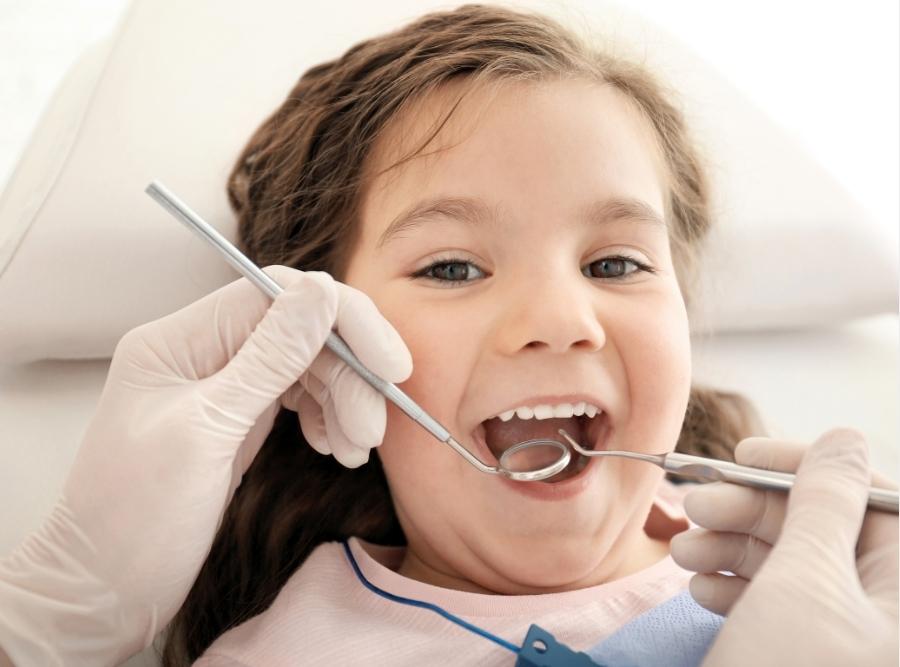At Miler Orthodontics, Dr. Miler and our team understand that families in Bluffton and the Lowcountry want the best for their children, both now and for the future. When it comes to your child’s smile and dental development, timing matters. That’s where early orthodontic care, often called Phase 1 treatment, comes in. Let’s walk through what it is, how you know if your child might need it, and how parents can make informed decisions.
What Is Phase 1 Orthodontic Treatment?
Phase 1 orthodontic treatment also referred to as interceptive orthodontics, is designed for children who are still in the mixed-dentition stage (when baby teeth remain alongside permanent teeth). It typically begins around age 6 to 10.
During this early phase, the orthodontist focuses not just on straightening visible teeth but on guiding jaw growth, controlling space for incoming adult teeth, and addressing developing bite problems before they become more complex.
Rather than replacing full braces from the start, Phase 1 may involve specialized appliances such as expanders, partial braces, or habit-correcting devices that make a meaningful difference while the child is still growing.
At What Age Should Children See an Orthodontist?
The ideal age for an orthodontic evaluation is by age 7, according to professional guidance. At this age, a specialist can spot early signs of trouble such as jaw growth issues, crowding, or bite irregularities and decide whether your child would benefit from early intervention or simply monitoring.
Seeing an orthodontist early doesn’t always mean immediate treatment. In many cases, it simply gives peace of mind and ensures that any needed interventions are timely rather than reactive.
What Problems Does Phase 1 Treatment Address?
Phase 1 targets issues that are easier to correct when growth is still underway: for example, crossbites (where upper and lower teeth do not align properly), underbites, narrow dental arches, early loss of baby teeth, or habits like thumb-sucking that affect dental development.
By addressing these early, orthodontists can guide the upper and lower jaws into better alignment, make room for permanent teeth to erupt properly, and reduce the risk of more invasive procedures later.
In essence, Phase 1 treatment sets the foundation for a healthier, more stable smile.
Does My Child Need Phase 1 Treatment, or Can We Wait?
This is one of the most common questions parents ask and understandably so. The decision to begin early treatment depends on the severity of the orthodontic issue and how it is likely to develop. If your child shows signs of structural jaw issues or bite problems that worsen with growth, early intervention may be wise.
On the other hand, many children do fine with a “watch and wait” approach, and only need one comprehensive phase of treatment later. The key is evaluation and monitoring. Choosing early treatment when it’s not needed may lead to unnecessary cost or treatment time. A trusted children’s orthodontist in Bluffton will help you determine what’s right for your child.
What Are the Benefits of Early Intervention?
There are several compelling advantages to starting early when needed. Because children’s jaws are still growing, orthodontic tools can guide skeletal development more easily, which may reduce the chance of needing tooth extractions or jaw surgery later on.
Early treatment also helps provide adequate space for permanent teeth, avoid complicated bite problems, and in some cases reduce the total treatment time or simplify the next phase. It can improve function (chewing, biting, speaking) and can boost a child’s self-confidence by avoiding visible orthodontic issues later.
For parents in the Lowcountry who invest in a child’s smile now, early intervention brings long-term value, not only in appearance, but in dental health and fewer surprises down the road.
Will My Child Still Need Braces Later?
Often, yes, Phase 1 treatment is rarely “all that’s needed” for complete alignment in children with permanent teeth yet to come. After Phase 1, there is usually a resting period to let adult teeth erupt, followed by Phase 2 treatment (braces or aligners) to refine alignment and bite.
It’s helpful for parents to understand that Phase 1 does not guarantee zero future treatment—it’s more about optimizing your child’s growth and reducing future complexity. At Miler Orthodontics we’ll clearly explain what we expect Phase 1 to achieve and what might come next so you have realistic expectations and a clear timeline.
How Long Does Phase 1 Treatment Take?
Treatment length varies widely depending on the issues involved and how well your child cooperates with appliance use. On average, Phase 1 often lasts around 6 to 18 months. Some children may finish sooner, especially if the problem was minor; others may require more time.
What’s important is the follow-up phase: after Phase 1, your child will likely be monitored until more permanent teeth erupt, and then you’ll move to Phase 2 if needed. Staying on schedule and following the orthodontist’s instructions helps keep the time and cost contained.
Parent-Focused Considerations: Timing, Costs & Long-Term Value
As a parent in Bluffton or Beaufort, you’ll naturally think about cost, timing, and how this fits your family’s rhythm. Early treatment may seem like an extra expense now, but when it prevents more serious issues or simplifies what’s needed later, it often delivers a strong return on investment. Many practices offer payment plans or staged treatment options.
You’ll also want to consider how your child’s school, activity schedule and growth stage align with treatment. Starting too early may mean a longer overall journey; waiting too long may risk more complex problems. The sweet spot is evaluation around age 7 and then making a tailored decision for your child.
The long-term benefit is a healthier, better‐aligned smile, fewer dental emergencies, and potentially less treatment later on. That’s why at Miler Orthodontics we aim to partner with you and guide you through every step, not just now, but for the smile your child will carry into adulthood.
Is Your Child Ready for Phase 1?

Early orthodontic intervention offers a meaningful opportunity to guide jaw growth, reduce future complications, and build a strong foundation for your child’s smile. It’s not always necessary but when the signs are there, acting sooner rather than later can change the trajectory of treatment.
We invite you to schedule a consultation with us at Miler Orthodontics, where our compassionate team will evaluate your child’s alignment, growth pattern and orthodontic needs. Together, we’ll decide if Phase 1 treatment is the right choice or if a careful watch-and-wait plan serves better at this moment. Because your child’s smile deserves the care and timing that matches their growth and your family’s hopes.









